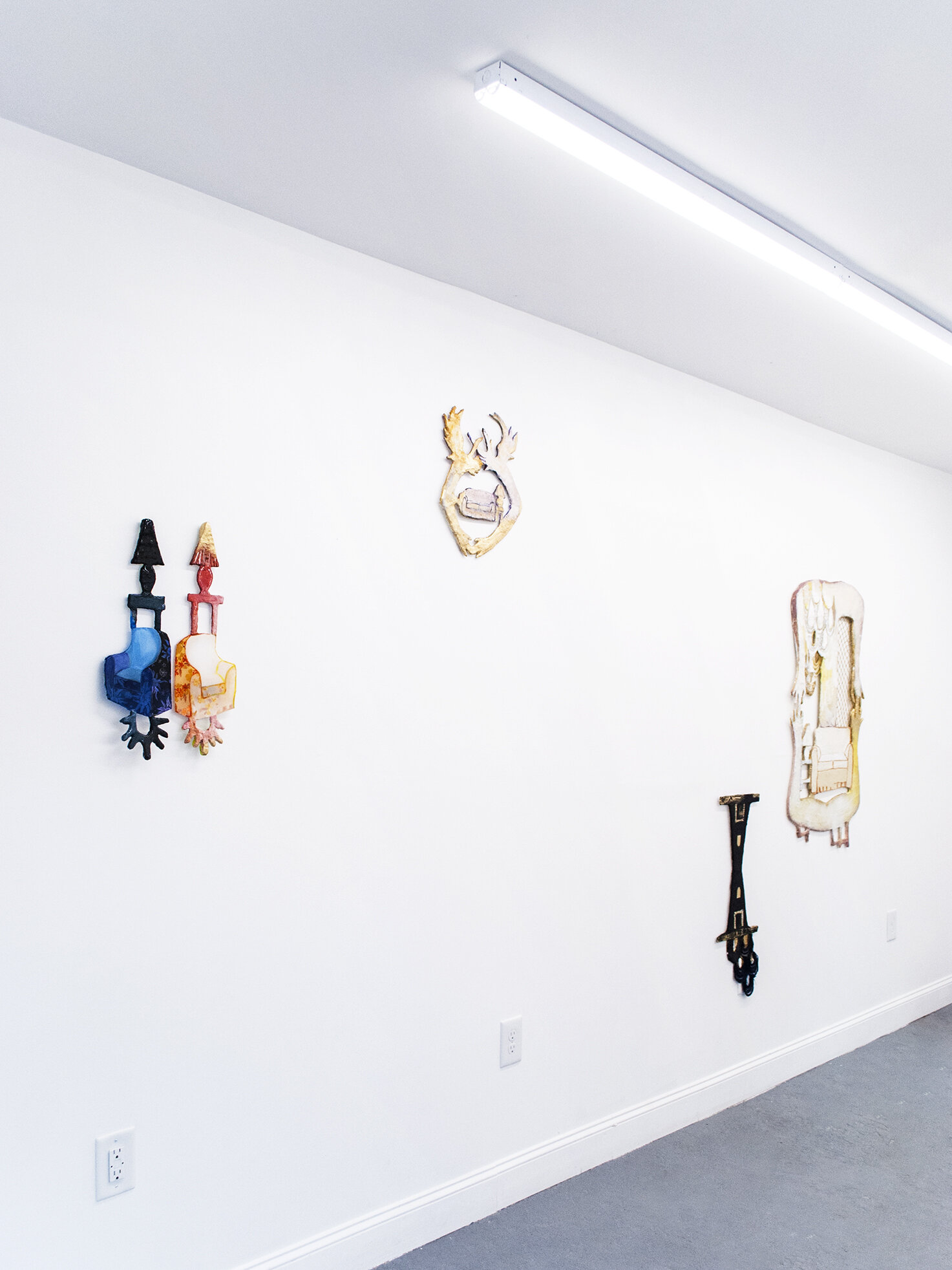
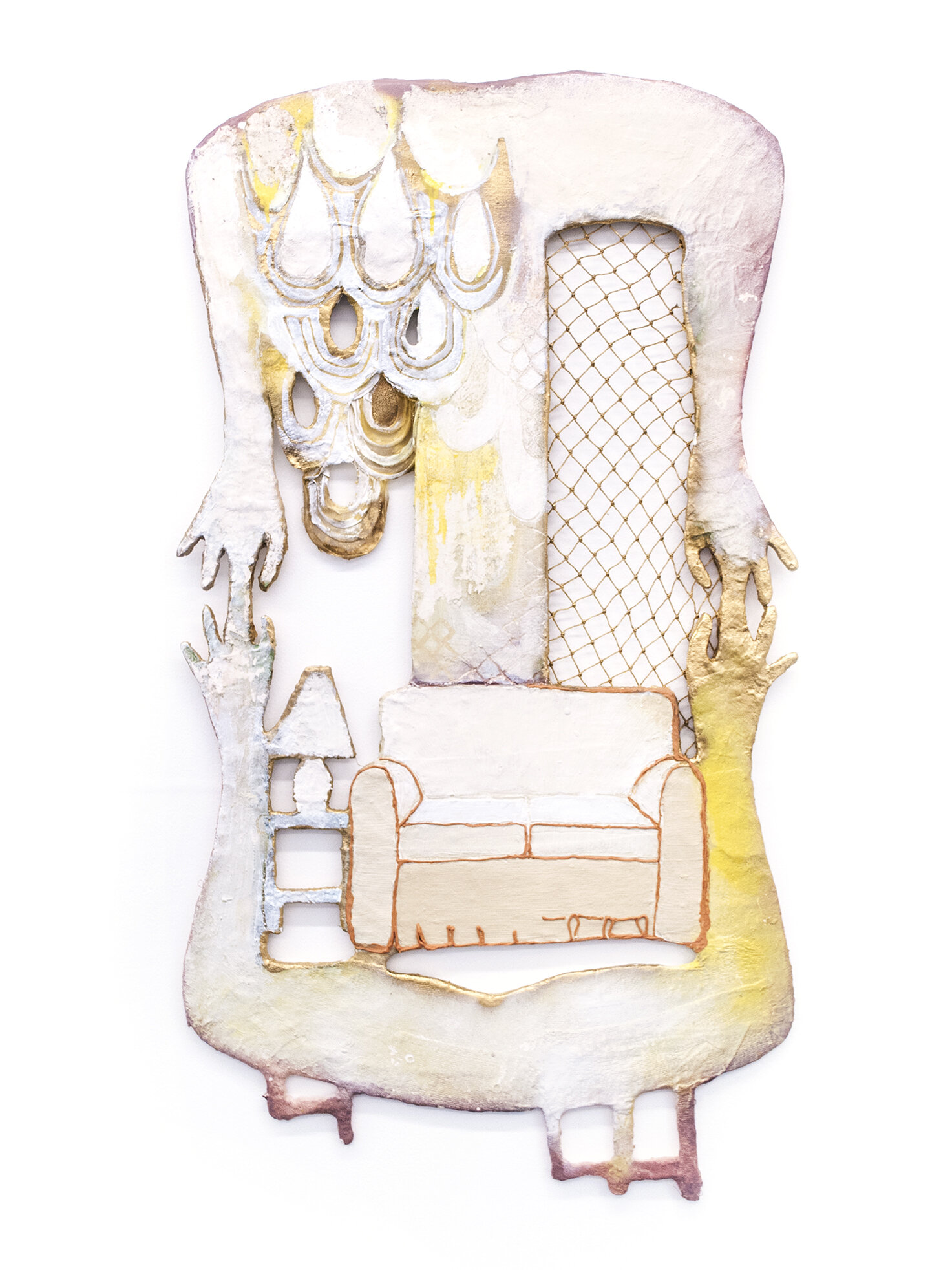





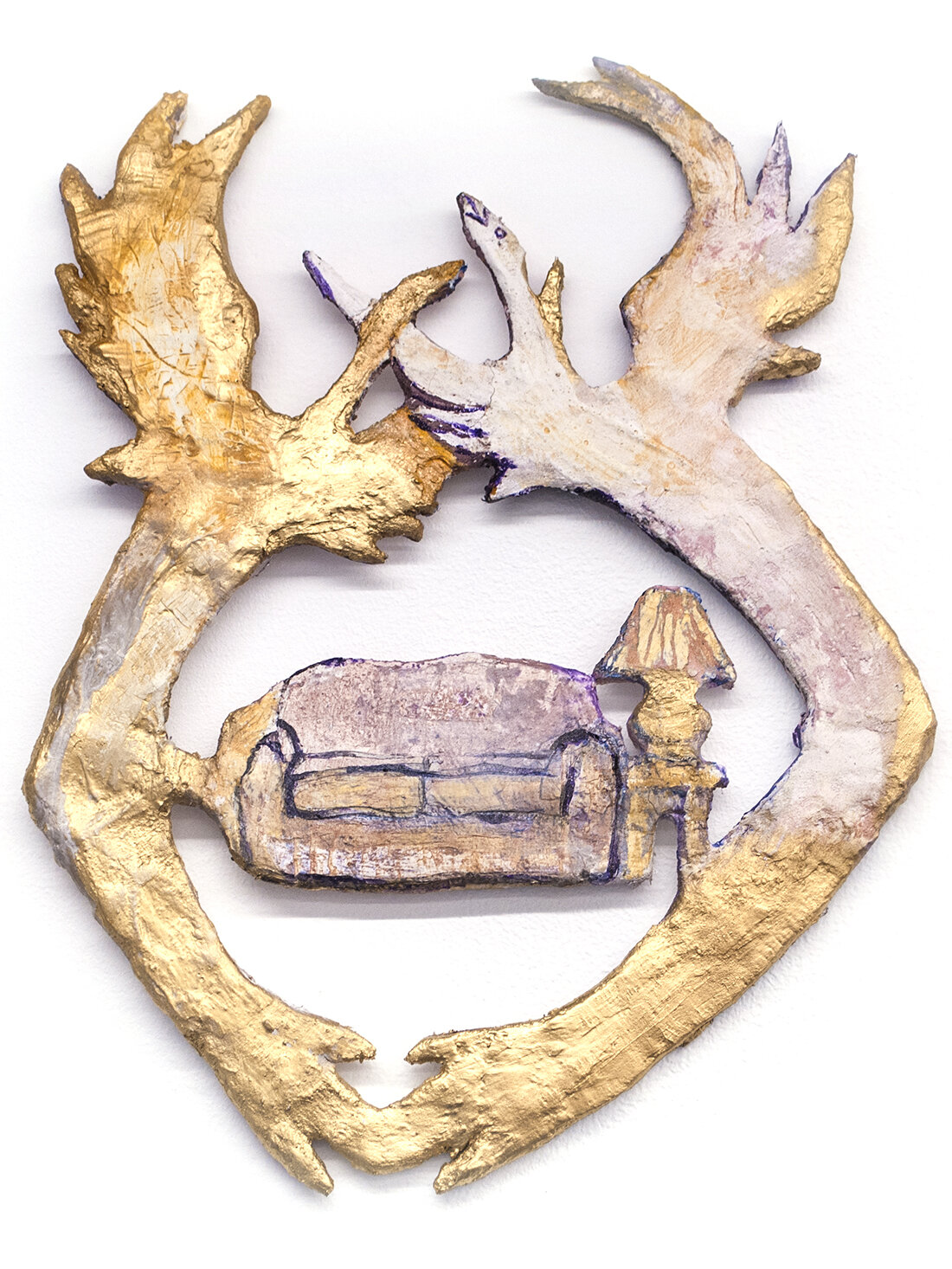





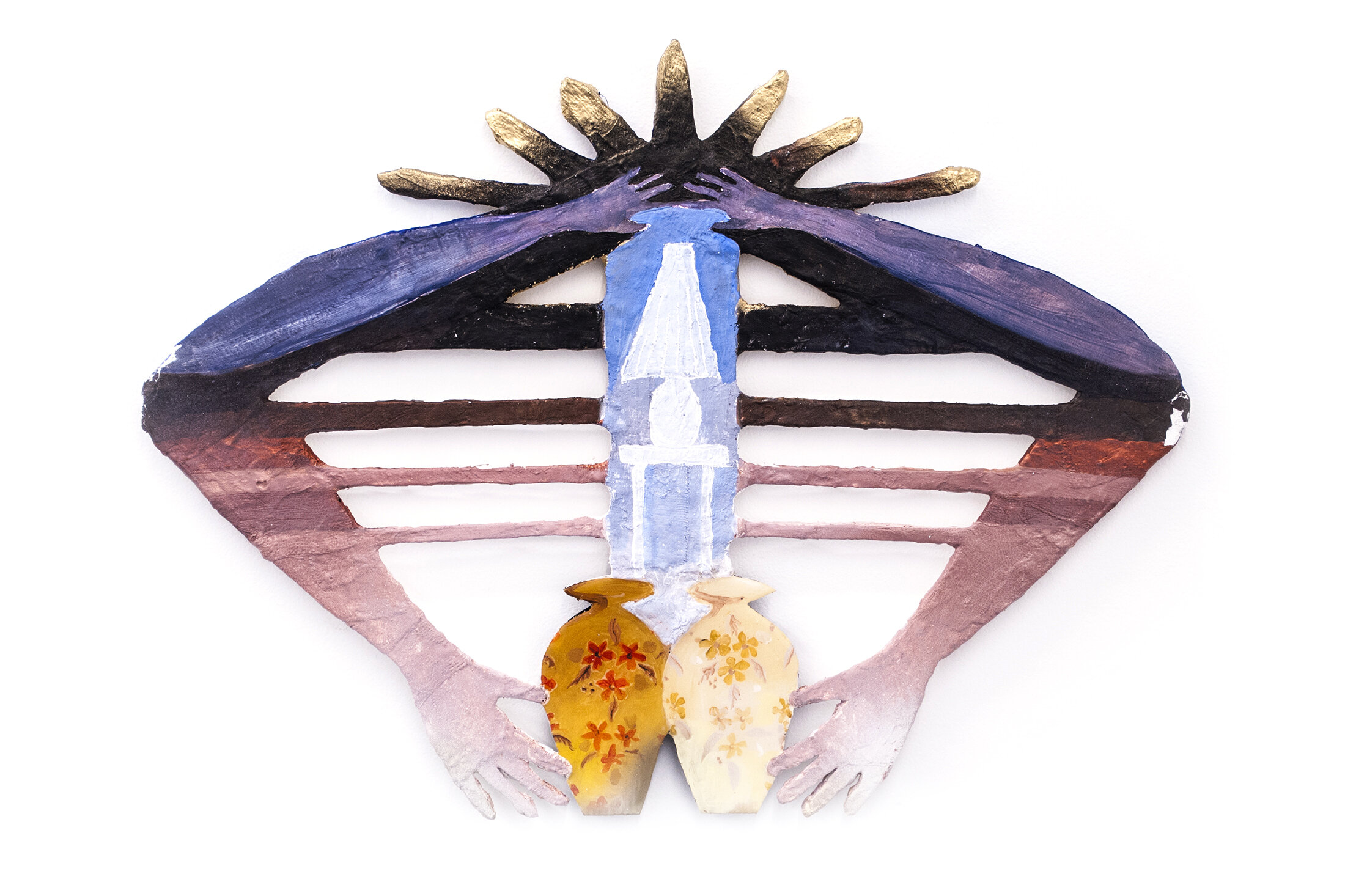






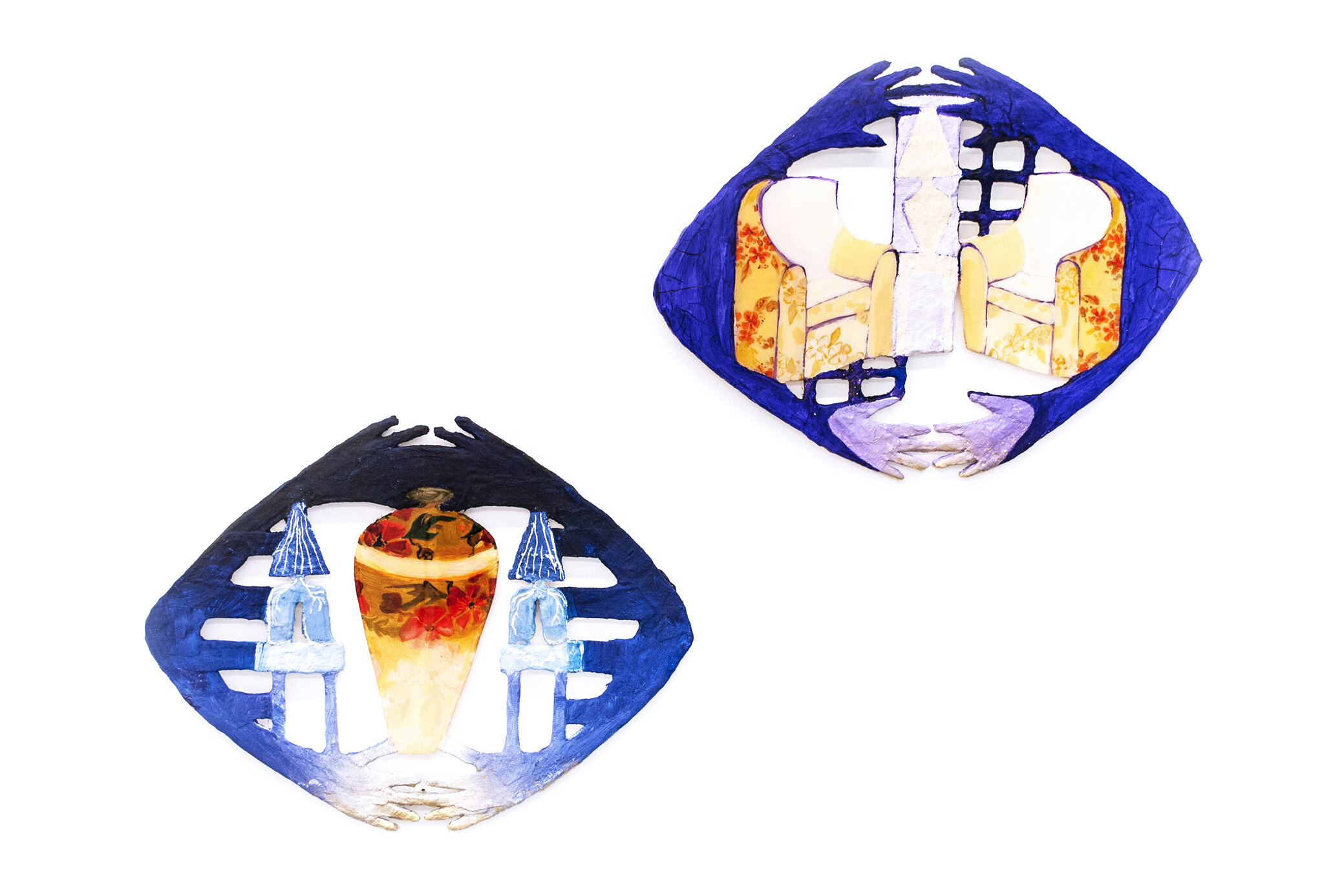


Stone House Art Gallery is pleased to present Haunt: a solo exhibition by Rachael Zur. In this new series, Zur blends traditional paint methods with sculptural intuitions to create a delicate query of the space between presence and absence. Each work depicts elements of domestic objects left behind by lost loved ones. For Zur, the objects in homes trigger memories and evoke feelings of a lingering presence of the departed. The act of repetitious remembrance is embodied through the lines, layers, and textures which build fragments of space and identity throughout the works. What becomes is something familiar and comfortable-- an act of haunting.
Presence and absence in a domestic space are all too convincing of paranormal possibility. Hints of the body hug and haunt the humble furniture and domestic objects depicted in these works. The domestic objects are overwhelmed by limbs, yet the specificity of the individual is absent. Chairs and vases are personalized by floral patterns and gold flecked finger-tips. The paintings shift from concrete dark forms to lighter paintings where the images are washed out. These lighter paintings echo forms, marks, and movement found in the darker works. Returning to similar forms becomes a way of returning to these humble domestic objects, and seeing and remembering what one has encountered in other works. Through this experience of seeing and remembering, the viewer becomes part of the action of haunting.
The works employ various uses of texture and contour line as ways to communicate the duality of presence and absence existing at once. Layers of texture suggest a longing for touch and place, or rather exist as a way to communicate what cannot be felt when a person is no longer physically present. Contour lines move across the surface of the works like phantoms; soft and blurred as if to imply a spirit. Other times a contour line defines the edge of a work, (articulating a wing or hand), as a fully present body. At once, the works become like objects in domestic spaces by prompting memories of those no longer there, and invite us to perceive this tension as active participants.
Individual works within the gallery remind us of their own history, which becomes tangled and complex when displayed among other works of similar but varying narratives. The works provide traces of tangible memories, while prominently displaying a presence which can often not be described with words. Together, the works in Haunt form an oeuvre of nonlinear forms floating amidst the blank walls of an unfamiliar home, like ghosts tracing the halls of a house that was once theirs.
Haunt was on view at SHAG during the month of July 2021.









